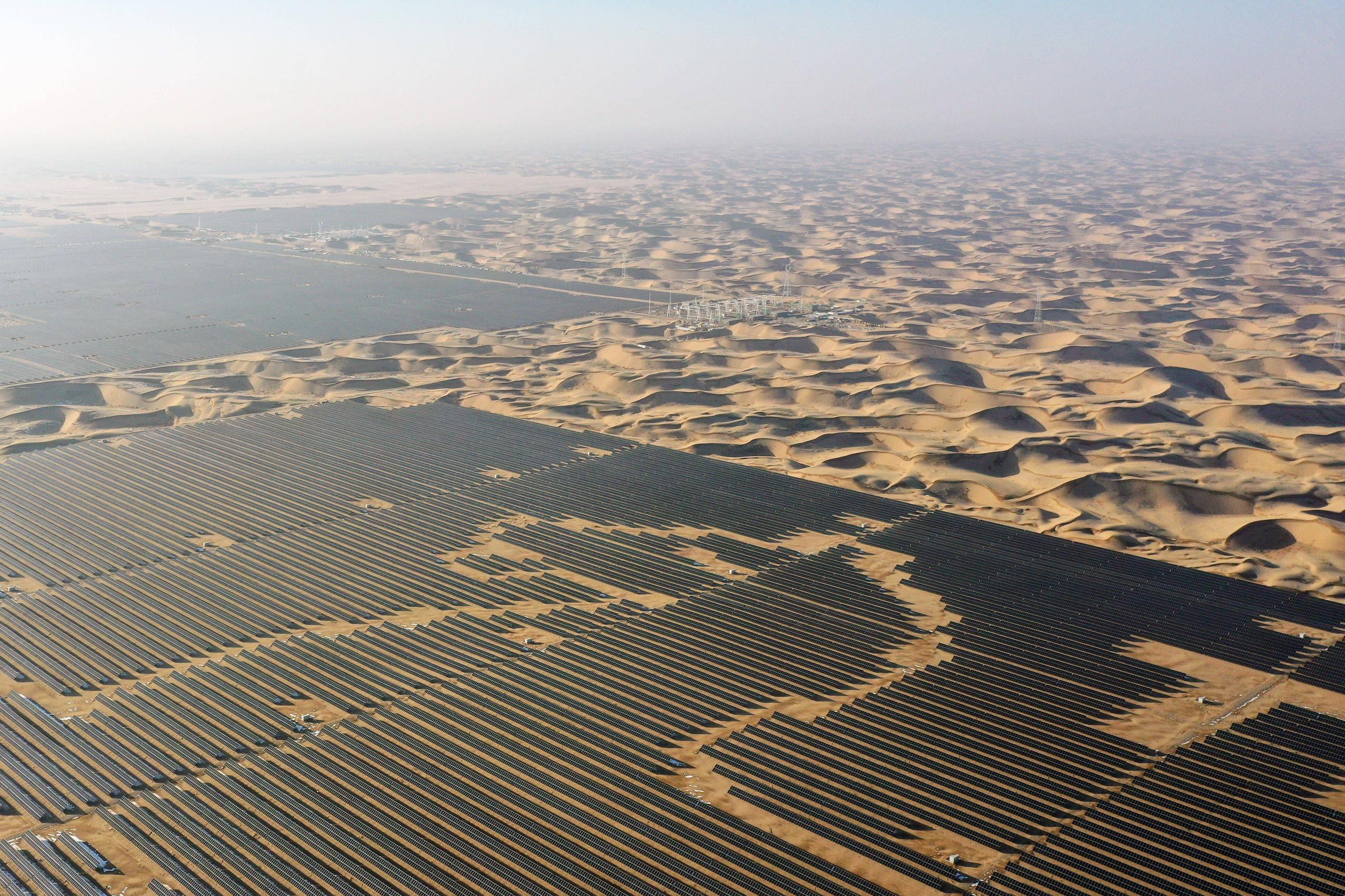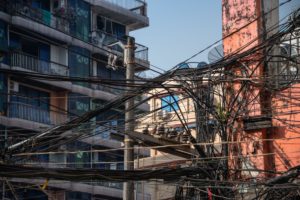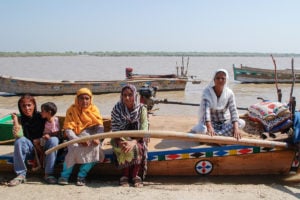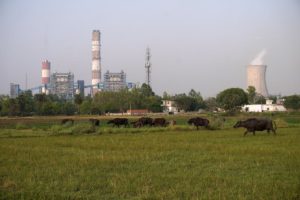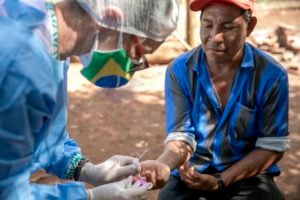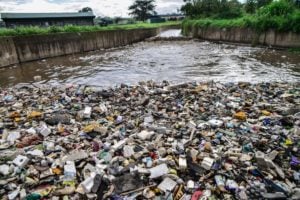“In three years, I want to be a renewable energy engineer, using the skills I studied in China to contribute to the energy transition in the Philippines. I want to help solve the climate crisis we are going through,” Princess Agnila told China Dialogue.
Agnila, 18, is among a group of Filipino students in China training to become renewable energy engineers. The three-year scheme was initiated by several environmental organisations based in the Philippines.
China’s global infrastructure programme, the Belt and Road Initiative (BRI), has been running for 11 years. But not many are aware that the country is also engaging with BRI nations on training projects like this.
Studying renewable energy overseas
In the autumn of 2023, 18 Filipino students, with ages ranging from 17 to 22, came to China to start a course in “new energy engineering” at Jiuquan Vocational and Technical College in Gansu province.
Four of them, including Princess Agnila, are from Tacloban. It was one of the first cities to be hit by the devastating Typhoon Haiyan in 2013, so they know first-hand the gravity of the climate crisis.
The Philippines comprises over 7,000 islands, which makes the country particularly vulnerable to disasters such as typhoons and flooding. But many of those islands are rich in wind and sunshine, making them suitable for wind and solar power development.
The country has been putting laws and policies in place to encourage such development. In 2021, its Department of Energy published a 2020-2040 National Renewable Energy Program, with the target for renewable energy to have at least a 35% share of the power generation mix set at 2030, and 50% by 2040.
Over 350,000 renewable energy jobs could be created in the Philippines by 2030, according to think-tank IEEFA (the Institute for Energy Economics and Financial Analysis). That figure is based on a per-megawatt employment rate for the different forms of renewable energy; for example, constructing a geothermal power project requires 25 employees per megawatt.
The Jiuquan students were carefully selected for their potential to help combat climate change and develop the renewable energy sector back home. All have done well academically in STEM subjects (science, technology, engineering and mathematics) and demonstrated an interest in the field. Family background was also considered; those from lower-income families, which could not afford overseas higher education fees, were prioritised.
Tom Wang is founder of People of Asia for Climate Solutions (PACS), a Manila-based NGO. He told China Dialogue that he wants to build bridges between China and climate-vulnerable nations. Training renewable energy personnel is vital, as is investing in wind and solar projects, to empower the countries to solve their own problems, he added.
The language of instruction in Jiuquan is Chinese. Before travelling to Gansu, the students were given months of Chinese classes in the Philippines, but have yet to reach the level needed for the course. Agnila explained that they initially tried going to classes with the Chinese students, but found it hard to keep up. They have now switched to full-time language classes at the college and will resume their planned studies when their Chinese is good enough.
From the Philippines to the Gobi Desert
Jiuquan is situated on the edge of the Gobi Desert, an exposed, sunny area perfect for developing wind and solar power. The college is less than 200km from the world’s largest wind farm, the Jiuquan Wind Power Base. There’s even a 10.1-megawatt solar power plant on campus for students to train in, meaning they get plenty of practical experience. It is common for students to do internships or go on to work for local businesses.
For the Filipino students, acclimatising to life here was not plain sailing. “It wasn’t just the cultural differences I had to deal with,” said Agnila. “The climate is very different too, much drier and with much bigger differences in temperature. It was hard to get used to. But after a month or so, we settled in.”
She added that the Chinese language classes will continue for a year, and that they are also taking physical education, art and calligraphy classes. They won’t choose a major until after that year, but most plan to study wind or solar power; Agnila will be opting for wind. However, they still don’t know much about what the actual courses will involve. They are aware they’ll have the chance to do practical work, but not the details.
PACS is in talks with other Chinese colleges and hopes to bring more students from the Philippines and other Belt and Road countries to study renewable energy technology in China. Tom Wang hopes those students will return home and use the skills and knowledge they’ve acquired to make their countries more resilient to climate change.
Getting the project underway hasn’t been easy, Wang says. Most of the funding comes from the colleges, which provide full tuition waivers and scholarships to cover food, accommodation and other living expenses. The colleges themselves receive some funding from the government to take on foreign students, with additional funding available for those from BRI countries. PACS, meanwhile, recruits students, helping them obtain visas and providing them with pre-trip training such as Chinese classes.
He explained that parents are often wary, as there are ongoing issues in the Philippines with human traffickers luring people with promises of overseas study; the fact it is free only makes them more suspicious. It took a lot of time and energy to convince the students’ parents and teachers to agree. The students themselves, though, have been enthusiastic and keen to get started.
Belt and Road capacity building
China is already helping to build up the renewable energy capacity of several Belt and Road countries, including the Philippines. The government has been encouraging the establishment of training programmes involving China and BRI countries. Not all of them are government-led: there are NGOs like PACS, and there are colleges’ own programmes to bring in international students.
Back in 2016, China’s Ministry of Education launched a Belt and Road education initiative. The idea was to encourage universities, vocational colleges and civil society organisations to carry out various forms of education cooperation and exchanges with countries along the Belt and Road. The initiative was welcomed by national and local governments, universities and NGOs.
That same year, a China–Egypt renewables laboratory was opened in Egypt, to help the North African country develop solar power engineering capacities and personnel. In 2018, a China–Arab League Clean Energy Training Centre was founded, with China providing training for technical staff, company managers and officials from Arab League countries working on solar power, wind power and smart grids.
Other landmark projects include the Lu Ban Workshops, involving vocational colleges in Tianjin and Belt and Road countries. There are 21 workshops in 20 countries, which have trained over 10,000 people on high-speed train maintenance, mechanisation of agriculture, new energy, electrical automation and industrial robotics.
The college in Jiuquan where the Filipino students are studying has also signed an agreement with a provincial government in Mongolia to train 20 students in agricultural and new energy technology.
Overseas funders are more interested in projects with immediate effects, like shutting down a coal power plantTom Wang, People of Asia for Climate Solutions
These projects are popular with students, but external funding is required if long-term aims are to be met.
Tom Wang admits that the PACS project faces a funding headache. The college in Jiuquan has waived tuition fees and provided scholarships. But 5,000-6,000 yuan (US$700-850) of expenses per student were incurred in the Philippines for Chinese language classes, passports and visa expenses, health checks, insurance and flights. Then there are other miscellaneous costs: the students didn’t have the clothing needed for a Gansu winter, and his former employers and colleagues ended up helping with those expenses.
“Overseas funders are more interested in projects with immediate effects, like shutting down a coal power plant, starting up a renewable energy project, or helping get a policy announced. Not training projects requiring years of patience and waiting,” he said.
There are still questions over how long funding will last for renewable energy training – whether government or NGO-led – and how successful and sustainable it will be.
Tom Wang believes the younger generation has great potential to drive sustainable development and tackle climate change, and that technical skills will give them the tools and resources they need to meet those challenges. He plans to keep PACS running, even without external funding.
“If funding is tight, we need to think about cutting student numbers,” he said. “Of course, we hope that, when our students graduate, they will help fund studies for other students, passing on their ideals and practices.”
Personnel shortages
The Philippines and other Southeast Asian countries have suffered shortages of the expertise needed for their energy transitions.
The nation’s Department of Labor and Employment estimates a lack of one million experienced engineering and construction workers. A lack of qualified applicants linked to a “brain drain” – where skilled locals seek better opportunities abroad – have led to vacancies for power plant maintenance engineers being particularly hard to fill.
Maria Luisa Inofre is Chief People Officer with Aboitiz Power, a major power generator in the Philippines. She recently explained that employers are having a hard time recruiting for staff with different skills to aid the transition from traditional to renewable energy. It is vital to train a workforce that can ensure energy security, affordability and sustainability, she added.
In 2022, there were 13.7 million people employed in the renewables sector in the Philippines, a 1 million increase from 2021, according to a recent report from the International Renewable Energy Agency (IRENA) and International Labor Organization (ILO).
The number of people employed in the sector is growing quickly worldwide – but so is the number of empty posts.
A 2022 article from McKinsey predicted the global renewables sector will need an extra 1.1 million blue collar workers by 2030 to develop and construct wind and solar power plants, and another 1.7 million to run and maintain them. That includes construction workers, electricians and operating engineers.
Tom Wang hopes to see the Filipino students currently in Jiuquan working in R&D or energy engineering in five to ten years, making a contribution to the country’s energy transition. “I also hope the project will help create new ideas and possibilities for cooperation between China and Belt and Road countries,” he said.


